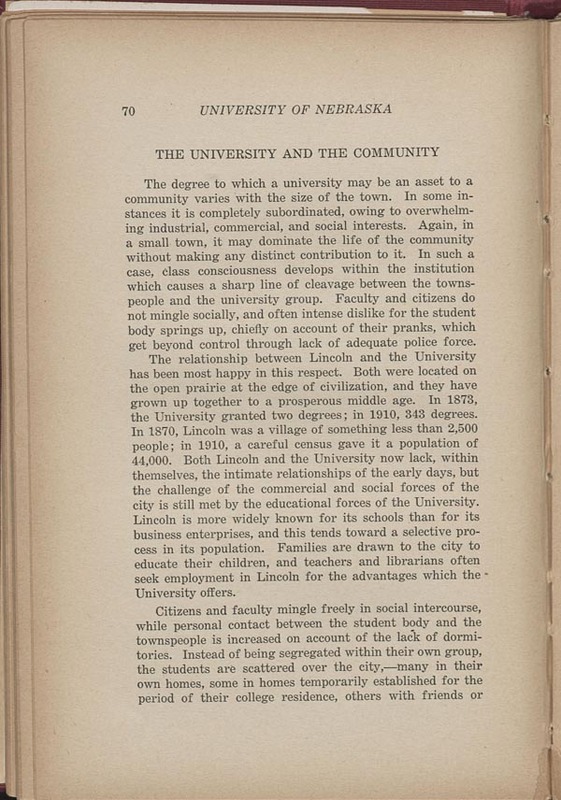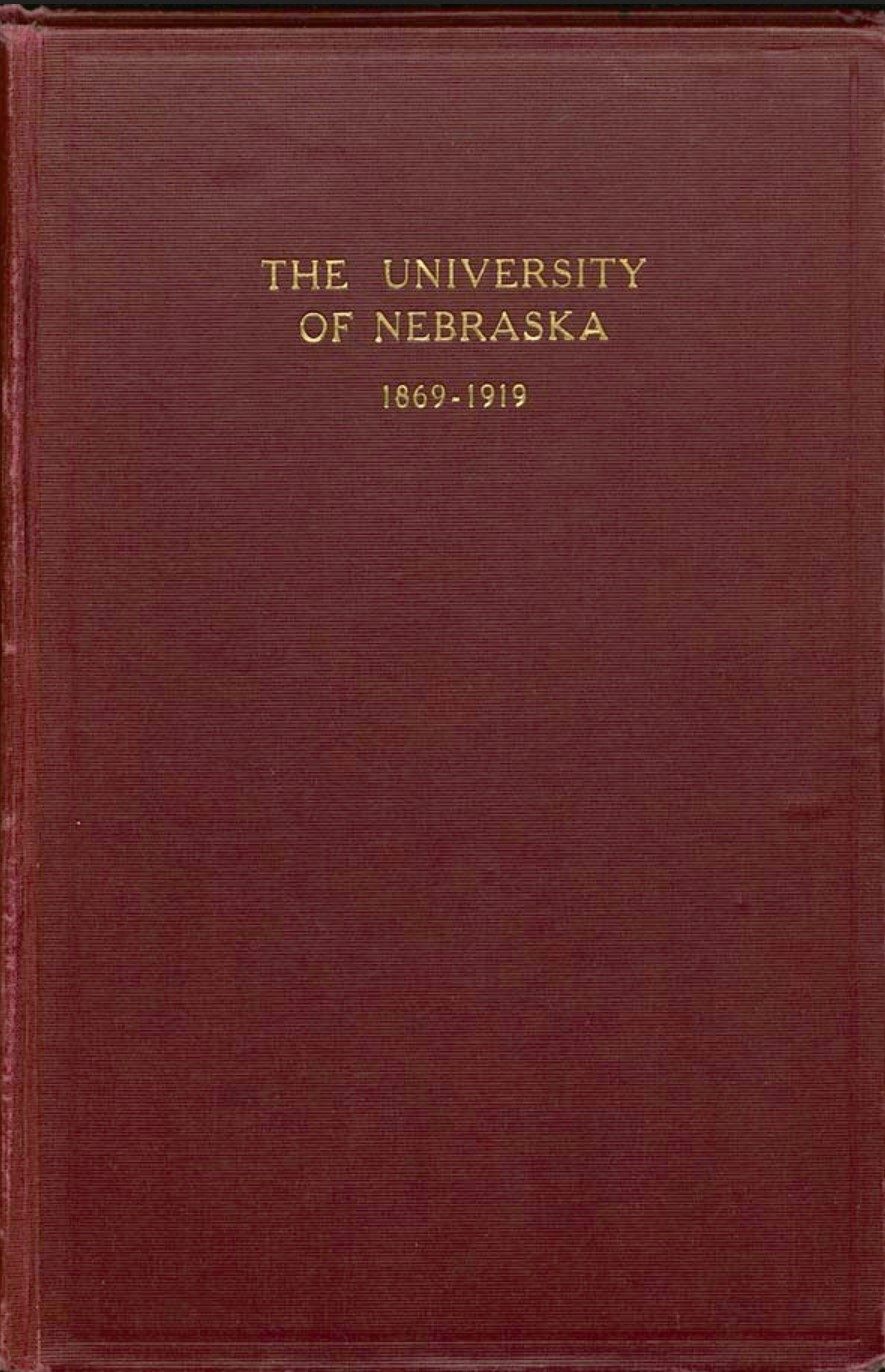074
Item
-
Title
-
074
-
Description
-
Semi-Centennial Anniversary Book: The University of Nebraska, 1869-1919
-
Transcription
-
THE UNIVERSITY AND THE COMMUNITY
The degree to which a university may be an asset to a community varies with the size of the town. In some instances it is completely subordinated, owing to overwhelming industrial, commercial, and social interests. Again, in a small town, it may dominate the life of the community without making any distinct contribution to it. In such a case, class consciousness develops within the institution which causes a sharp line of cleavage between the townspeople and the university group. Faculty and citizens do not mingle socially, and often intense dislike for the student body springs up, chiefly on account of their pranks, which get beyond control through lack of adequate police force.
The relationship between Lincoln and the University has been most happy in this respect. Both were located on the open prairie at the edge of civilization, and they have grown up together to a prosperous middle age. In 1873, the University granted two degrees; in 1910, 343 degrees. In 1870, Lincoln was a village of something less than 2,500 people; in 1910, a careful census gave it a population of 44,000. Both Lincoln and the University now lack, within themselves, the intimate relationships of the early days, but the challenge of the commercial and social forces of the city is still met by the educational forces of the University. Lincoln is more widely known for its schools than for its business enterprises, and this tends toward a selective process in its population. Families are drawn to the city to educate their children, and teachers and librarians often seek employment in Lincoln for the advantages which the University offers.
Citizens and faculty mingle freely in social intercourse, while personal contact between the student body and the townspeople is increased on account of the lack of dormitories. Instead of being segregated within their own group, the students are scattered over the city,—many in their own homes, some in homes temporarily established for the period of their college residence, others with friends or
-
Rights
-
To inquire about usage, please contact Archives & Special Collections, University of Nebraska-Lincoln Libraries. These images are for educational use only. Not all images are available for publication.



